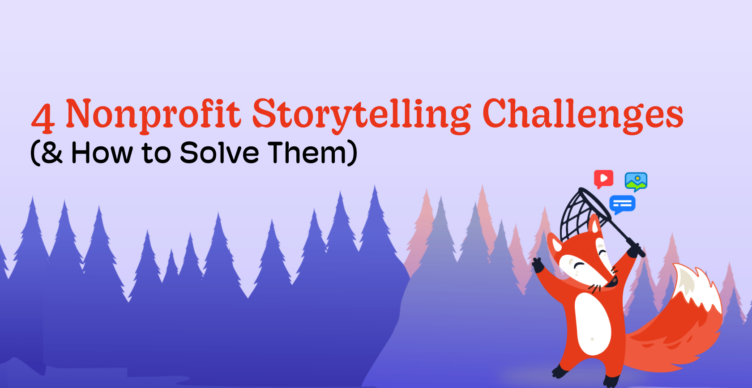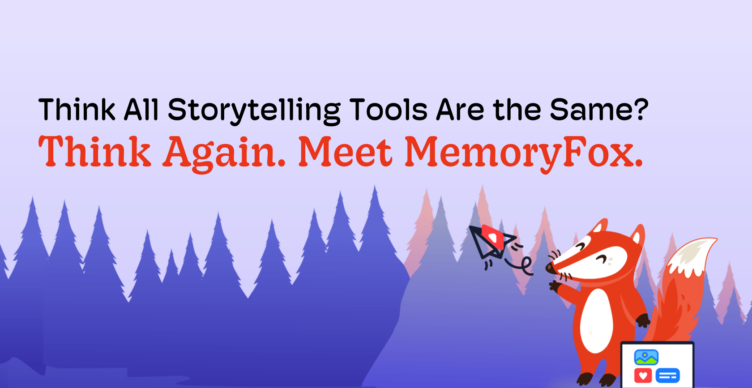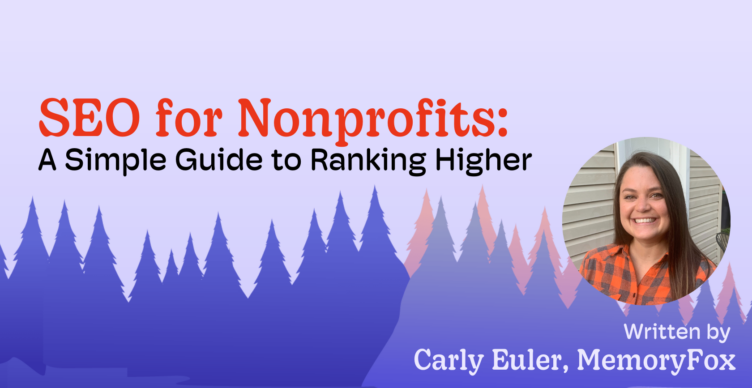Storytelling Strategy, Video Storytelling
7 Storytelling Examples to Inspire Your Next Fundraising Campaign
Nonprofit storytelling statistics paint a compelling picture of the usefulness of this communication strategy; stories are 22 times more memorable than facts alone, and they help make your mission feel more real to supporters. Video storytelling in particular is effective for driving fundraising—57% of people who watch nonprofit videos end up donating.
How can you harness the power of storytelling to engage supporters, improve the giving experience, and increase funds for your mission? This guide explores seven effective nonprofit storytelling examples and best practices used in each.
Iowa Heartland Habitat for Humanity: Women Build
Iowa Heartland Habitat for Humanity Women Build 2024 is an initiative to build two houses for families in the Waterloo community. The webpage for the campaign spotlights the two families, along with a collection of memories from the build. The memories include:
- Videos of community members giving well wishes
- Messages of thanks for donors and volunteers
- Videos and photos depicting the progress of each build
This content was created with the help of MemoryFox’s story collection tool. Organizations can use MemoryFox to collect stories from their audience in the form of photos, videos, and written testimonials. Then, they can access a bank of inspirational stories to pull from to give social media posts, emails, reports, and other communications greater depth.
In this case, volunteers could view prompts and Q&As to guide them through the content creation process, helping them make videos and testimonials that brought their experiences to life.
charity: water: Adane’s Story
charity: water is often acclaimed as a leading organization when it comes to compelling visual storytelling. Adane’s Story is an outstanding example of the way that the nonprofit tells each individual’s story through their own words.
The story is told in two parts:
Adane’s Story | charity: water
- The first video provides an overview of the scope of water scarcity worldwide. Then, it zooms in to provide a look at how water scarcity impacts the life of one young boy named Adane. It demonstrates how generous donations helped bring clean, easily-accessible water to Adane’s village, allowing him to stay healthy and attend school full time.
Adane, In His Own Words | charity: water
- The second video provides a first-person interview with Adane. It gives him the floor to explain in his own words how water scarcity impacted his life and how access to clean water empowered him to work toward his dream of becoming an engineer.
This example demonstrates the importance of prioritizing ethical storytelling by giving beneficiaries a platform to tell their own stories. Keep in mind that it’s absolutely crucial to ask for consent before sharing constituents’ stories, and to allow them to revoke that consent at any time they choose. These measures allow you to maintain trust with your audience and foster long-term support.
The Nature Conservancy: Perspectives Blog
The Nature Conservancy’s mission to tackle climate change and preserve the natural world is supported by its online blog, called Perspectives. Perspectives isn’t just a tool to share stories about individuals impacted by climate change; it’s also a platform for sharing credible research and resources about climate issues.
Their blog posts include statistics and data points not only from their internal research but other credible online sources and climate change experts. Ultimately, this storytelling strategy helps increase engagement—some studies show that data-driven stories can increase audience engagement by up to 300%.
Including data in stories adds authority to your nonprofit’s content and can help turn your blog into a leading educational resource in your sector.
Urban League of Metropolitan Seattle: Community Conversations
The Urban League of Metropolitan Seattle (ULMS) is a civil rights organization that “empowers African Americans, as well as other diverse underserved communities, to thrive by securing educational and economic opportunities.” The organization’s Black Health Matters campaign seeks to help close the public health gap and improve health equity through reliable information about the COVID-19 vaccine and other health concerns.
This campaign was supported by a video called Community Conversations: BIG Questions where young community members had the opportunity to send in questions to healthcare professionals about COVID-19:
The video features a helpful Q&A where Drs. Stephaun Wallace and Estell Williams walk through each question, providing a clear answer based on their many years of experience and education. This storytelling approach allows community members to have their voices heard and alleviates fears and concerns about public health issues.
This video was also created with the support of MemoryFox, showcasing another way to use this unique, creative content generation approach.
The University of Alabama: The Rising Tide Campaign
The University of Alabama needed a major digital marketing push to support its largest fundraising effort yet. Thus, the Rising Tide 2.0 online campaign was born. The campaign leverages a fundraising thermometer, campaign allocation information, and student testimonials to tell a cohesive story and inspire donor support.
Plus, the university published a comprehensive campaign video outlining the purpose and goals of the campaign for potential donors:
The Rising Tide | Campaign Video: The University of Alabama
This style of campaign marketing is in your nonprofit’s grasp, even if you don’t have tons of video experience. According to BWF’s guide to university fundraising, authenticity is vital to higher-ed fundraising success: “Ensuring your stories and imagery are genuine is more important than having a professional, sleek look for your marketing materials.” Keep that in mind as you compile stories for your fundraising campaigns.
Phoenix Children’s Foundation: Moments
The Phoenix Children’s Foundation website features compelling and inspiring stories on their “Moments” webpage. The page is divided into four sections:
- Brave Fighters: Stories about children served by the Phoenix Children’s Hospital.
- Hope Makers: Stories about donors making a difference for children in need.
- Changing Futures: Stories that share information about how donations make a difference for healthcare and community programs.
- Bold Ideas: Stories about research and innovations from the hospital’s physicians.
Together, these categories tell a broader tale about how donors and healthcare providers can come together to make a positive impact on the lives of children facing medical issues. They combine photos, written text, videos, and direct quotes to make each story feel as real and genuine as possible.
For example, a blog post about new telehealth solutions incorporates text, photos, a video, pull quotes, and data to explain the value of the new tools. Readers can quickly understand how they’re being used and the impact of the solutions on young patients.
Covenant House Vancouver: Impact Report
Covenant House Vancouver is devoted to supporting youth experiencing homelessness. Their annual reports are illuminating examples of succinct, descriptive ways to show impact.
For instance, the 2023 Impact Report uses clear numbers and data points to provide an overview of the year at a glance:
The report shows the impact of the nonprofit’s services through the eyes of two specific individuals: Amalie and Dylan. Lastly, the report wraps up with more hard data highlighting how the organization uses donations, reassuring supporters that their gifts are being put to good use:
This annual report style provides a comprehensive story for supporters, allowing them to form a personal connection with the cause and see hard data that underscores the effectiveness of this organization. This helps deepen supporter relationships, increasing the chances the donors will continue contributing for the long term.
As you review these nonprofit storytelling examples, draw inspiration from the videos, testimonials, photos, and written stories that speak to you the most. Ensure any stories you tell reflect your nonprofit’s values and voice.
In addition, strategize the best ways to incorporate stories into your digital fundraising campaigns across communication platforms, including your website, social media, and email. With these best practices, you can create stories that further your engagement and fundraising goals, drawing reliable support to your mission.

About the Author
James Barnard
Associate Managing VP of Annual Giving & Digital Marketing, BWF
James is an integral part of the team at the global fundraising consultancy at BWF. James uses his over 15 years of experience to help organizations build community and maximize their fundraising potential by optimizing their digital strategy and philanthropic marketing. He has been active in CASE for years, serving as a conference speaker and CASE District III board member.




